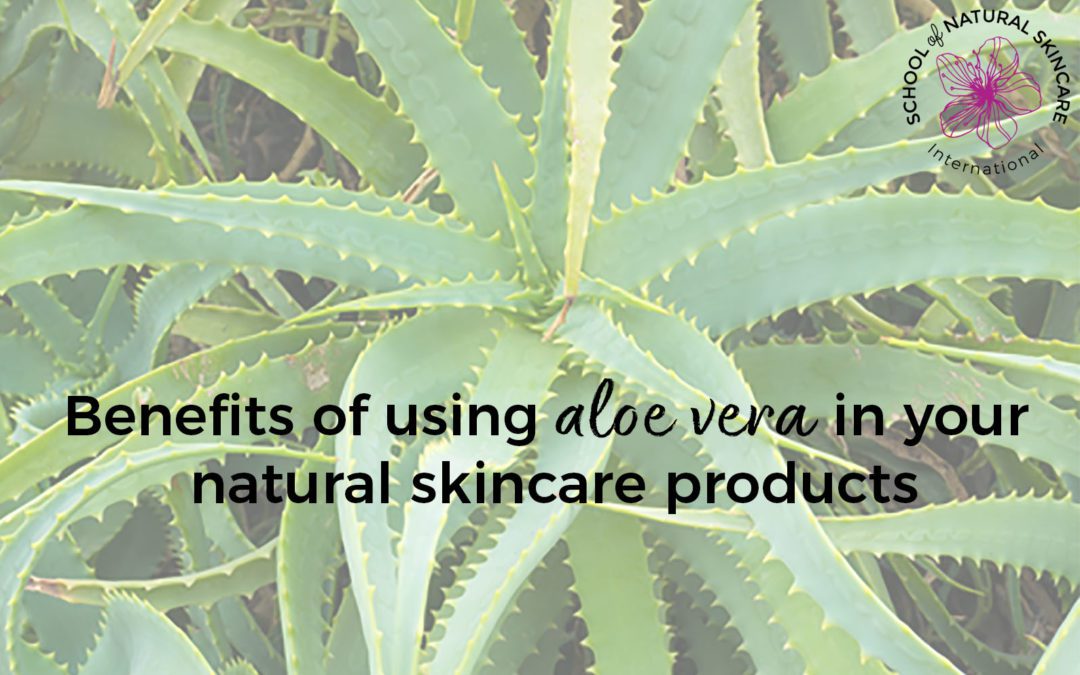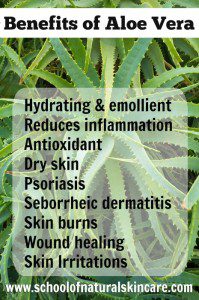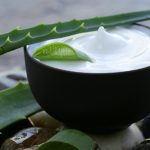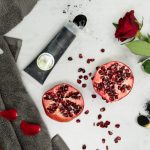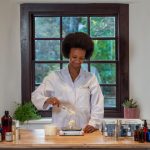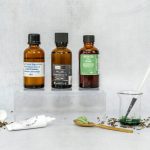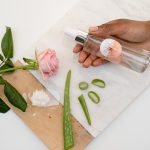Aloe barbadensis, or aloe vera, is a succulent plant which offers many benefits and is suited for all skin types, especially dry, damaged, broken, sensitive and irritated skin. It offers anti-inflammatory, antimicrobial, antioxidant, humectant and soothing, anti-itch qualities for skin.
“More than 400 aloe species have been described, mainly occurring in Africa. The best known representatives are Aloe vera and Aloe ferox, which are of great cosmetic and medicinal value. Topically, aloe is used for burns, wound healing, psoriasis, sunburn, frostbite, inflammation, osteoarthritis and cold sores. It is also applied topically as an antiseptic and as a moisturizer.” (CosmeticsBusiness.com)
Composition and nutrition of aloe vera
Aloe vera contains vitamin B complex, folic acid, vitamin C and carotene, which is a precursor of vitamin A. Aloe vera leaf juice is commonly used in cosmetic formulations, and is composed of mainly water, along with polysaccharides, anthraquinones, amino acids, glycosides, minerals, flavones, phytosterols and salicylic acid.
- Polysaccharides give aloe its hydrating, emollient and anti-inflammatory benefits, while creating a protective barrier on the skin.
- Aloe contains a large number of anthraquinones, which offer antimicrobial and antioxidant characteristics.
- Flavones offer further protection from free-radical damage.
- Phytosterols are anti-inflammatory, which calm and soothe itchy skin, also moisturizing and protecting the skin from trans-epidermal water loss.
- Glycosides promote healthy cell regeneration and offer antihistaminic (anti-allergen) properties, while vitamins, minerals and essential amino acids nourish the skin.
Sourced and processed
Aloe vera produces two substances which are commonly used in the medical and pharmaceutical world: gel and latex. Aloe gel is a jelly-like substance found in the inner part of the aloe plant leaf, and it is clear in color. Aloe latex is yellow in color, and it is sourced from just under the plant’s skin.
Aloe in cosmetic use is often in liquid or powder extract form and derived from aloe gel, the inner part of the aloe leaf. Aloe is often used in medicine, alternative medicine and cosmetics industries, for its moisturizing, healing, skin soothing and rejuvenating properties.
Uses and benefits
The aloe plant exhibits many pharmacological activities such as “antioxidant, antimicrobial, immune boosting, antitumor, hypoglycemic, hypolipidemic, wound healing, and antidiabetic.” (Maharjan and Nampoothiri, 2015)
According to the Mayo Clinic, “Aloe is likely safe when applied to the skin to reduce pain or inflammation. Aloe is likely safe for burns, frostbite, human papilloma virus-1 (HPV) infections (cold sores), psoriasis, and wound healing in people who are not allergic or sensitive to aloe. Medical attention should be sought for severe burns, wounds, or frostbite.” (Mayoclinic.org)
Aloe is reportedly well tolerated in most individuals, even children. The Mayo Clinic describes cases of aloe vera assisting healing of a variety of conditions including:
- dry skin
- psoriasis (inflammatory skin condition)
- seborrheic dermatitis
- dandruff
- skin burns
- wounds
- irritations.
How to use aloe vera in your products
Aloe in its liquid or gel form is water-soluble and works well as an addition or base ingredient to facial toners, mists or spritzers. It also makes a nice addition to lotions and creams, by adding in the water-phase in place of water as an ingredient. Liquid aloe is often used in cosmetics in dilutions of 15-20%, to ensure proper preservation is maintained. In alternative medicine, aloe compresses are often applied to skin directly at concentrations between 10-70%, sometimes higher, as few people show irritation or sensitivity to aloe.
For anhydrous products, aloe butter is also available, which is aloe extracted into a butter (often coconut oil).
Aloe vera gel juice typically has a shelf life of one year, and refrigeration can help extend the shelf life and quality. The composition of aloe makes it prone to contamination and spoil from microorganisms, therefore its use in products should always be accompanied by a preservative system, and GMP (good manufacturing practices).
Want to know more?
Discover how to create high-performance products using aloe vera and many other natural ingredients in our Diploma in Natural Skincare Formulation.
References
Evaluation of biological properties and clinical effectiveness of Aloe vera: A systematic review
Maharjan H. Radha and Nampoothiri P. Laxmipriya, 2015.
The Review on Properties of Aloe Vera in Healing of Cutaneous Wounds,
Seyyed Abbas Hashemi, Seyyed Abdollah Madani, and Saied Abediankenari.

